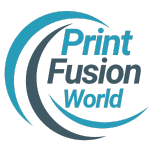Why Print is Still Relevant in the Digital Age
In today’s digital age, where information is readily available at our fingertips, it may seem like print is becoming obsolete. However, print media continues to hold its own and remains a relevant and valuable medium for communication. In this blog post, we will explore why print is still important and how it complements the digital landscape.
Tangible and Credible
One of the key advantages of print media is its tangibility. Unlike digital content, which can be easily scrolled past or ignored, print materials demand attention. Whether it’s a magazine, newspaper, or brochure, print media allows readers to physically engage with the content. This tactile experience creates a sense of credibility and trustworthiness that digital media often lacks.
Print also offers a break from the constant bombardment of online advertisements. With ad-blockers becoming increasingly popular, digital ads can easily be ignored or blocked altogether. In contrast, print ads have a physical presence that cannot be ignored. This makes print advertising an effective way to reach a target audience and make a lasting impression.
Enhanced Engagement and Focus
Reading from a screen can be distracting, with notifications, pop-ups, and other online distractions vying for our attention. Print media, on the other hand, allows for a more focused reading experience. When reading a physical book or magazine, there are no notifications or distractions to interrupt the flow of information. This enhanced engagement can lead to better comprehension and retention of the content.
Print media also offers a sense of permanence. Digital content can easily be deleted, lost, or forgotten. In contrast, print materials can be kept and revisited at any time. Whether it’s a bookmarked page in a magazine or a dog-eared corner of a book, print media allows readers to easily return to their favorite articles or references.
Complementary to Digital Media
While digital media has its advantages, print and digital can work together to create a more comprehensive and effective communication strategy. Print materials can drive traffic to digital platforms by including QR codes, website URLs, or social media handles. This integration allows readers to seamlessly transition from print to digital and vice versa.
Additionally, print media can provide a sense of legitimacy and authority to digital content. Including a physical copy of a publication or a printed article in a portfolio can enhance credibility and professionalism. Print media can also serve as a physical reminder of a brand or message, making it more memorable and impactful.
In conclusion, print media continues to play a vital role in our digital age. Its tangibility, credibility, enhanced engagement, and complementary nature to digital media make it a valuable medium for communication. By understanding the unique strengths of print and digital, businesses and individuals can create a well-rounded and effective communication strategy.


 Cart is empty
Cart is empty
Add a Comment